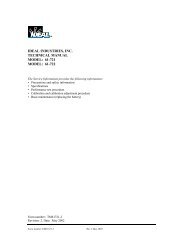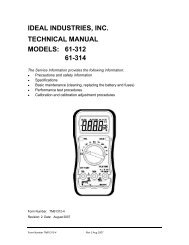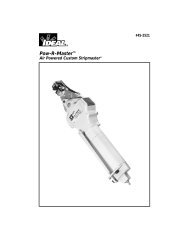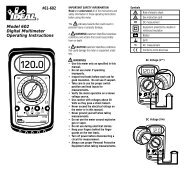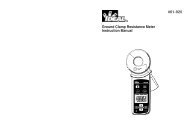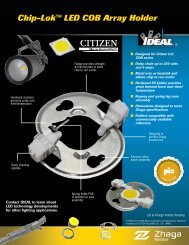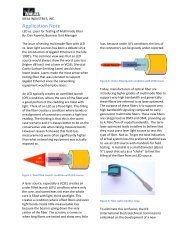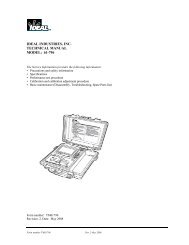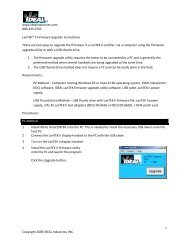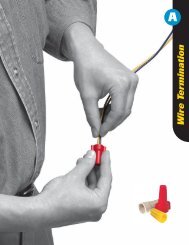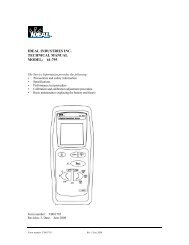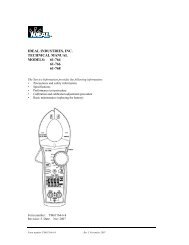LanTEK® II Series Manual - Ideal Industries Inc.
LanTEK® II Series Manual - Ideal Industries Inc.
LanTEK® II Series Manual - Ideal Industries Inc.
Create successful ePaper yourself
Turn your PDF publications into a flip-book with our unique Google optimized e-Paper software.
6.13. Impedance Test<br />
Chapter 6<br />
Structured cabling testing<br />
The average impedance is calculated from delay of electrical signal and capacitance<br />
measurement. The result is indicated in ohm. The average impedance can help in indentifying<br />
damages to cable, connections or cable sections with impedance mismatch.<br />
Since this test uses a capacity measurement, the correct cable type must be indicated to<br />
obtain a precise measuring result.<br />
NOTE:<br />
The measurements are incorrectly calculated if the setting is for a type CAT 3 cable (the<br />
cable insulation containing PVC), but the test is actually performed on a CAT 5 cable<br />
(insulation containing Teflon ). Therefore, ensure that the correct cable type is selected.<br />
6.13.1. Impedance Error<br />
Illustration 6.13. Impedance Test<br />
Impedance errors cause signal reflections and signal reduction. Average impedance of wire<br />
pairs should comply with LAN system impedance of 100, 120 or 150 .<br />
6.14. Delay and Skew Test<br />
This test determines the delay of a test signal that was fed at one end of the cable to the<br />
other end of the cable. The delay skew indicates the difference between the measured delay<br />
of the corresponding wire pair and the wire pair with the lowest delay value. The limits<br />
specified for delay and skew depend on selected cable type.<br />
Illustration 6.14. Delay and Skew Test<br />
65



